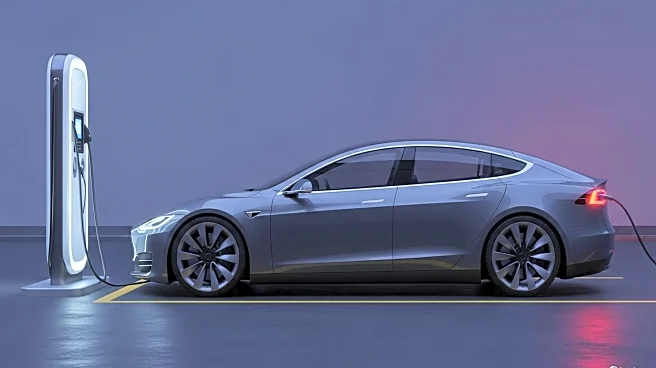What's Happening?
Ford has introduced the Mustang GTD, a high-performance vehicle equipped with advanced aerodynamics technology typically found in Formula 1 cars. The Mustang GTD boasts an impressive 815 horsepower and 664 pound-feet of torque, with a starting price of $327,960. Key features include a sophisticated drag reduction system (DRS) that optimizes downforce and aerodynamic drag, allowing for higher speeds on straightaways. The DRS works in conjunction with retractable front splitter flaps, enhancing the car's balance and performance at high velocities. The Mustang GTD's design incorporates large fender louvers and reach strakes, contributing to its exceptional handling and speed capabilities.
Why It's Important?
The introduction of the Mustang GTD marks a significant advancement in automotive technology, particularly in the realm of aerodynamics. By integrating Formula 1-inspired technology into a consumer vehicle, Ford is setting a new standard for performance cars. This development could influence the automotive industry by pushing competitors to innovate and incorporate similar technologies in their models. The Mustang GTD's high price point and advanced features position it as a luxury item, appealing to affluent consumers and car enthusiasts seeking cutting-edge performance. This move may also enhance Ford's reputation as a leader in automotive innovation.
What's Next?
As the Mustang GTD reaches customers, it is expected to generate interest and demand among high-performance car enthusiasts. Ford may continue to refine and develop its aerodynamic technologies, potentially leading to further advancements in future models. The automotive industry will likely monitor the Mustang GTD's reception and performance, which could influence design and technology trends. Additionally, Ford's competitors may respond by accelerating their own research and development efforts to match or surpass the Mustang GTD's capabilities.
Beyond the Headlines
The Mustang GTD's integration of advanced aerodynamics raises questions about the future of consumer vehicles and the potential for more widespread adoption of racing technologies. This could lead to discussions on the ethical implications of high-speed vehicles on public roads and the need for regulations to ensure safety. Furthermore, the environmental impact of producing such high-performance cars may become a topic of interest, prompting manufacturers to explore sustainable practices.











